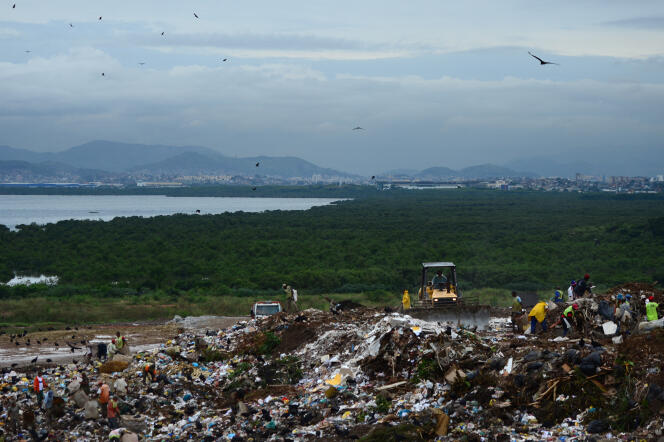

LETTER FROM RIO DE JANEIRO

"Do you hear that sound? Like rain falling?" Wearing a multi-pocket vest, Mario Moscatelli, a 59-year-old biologist, pointed to a puddle in the middle of a labyrinth of bowed mangrove roots. "These are crabs that filter water with their bronchi!" Hearing the approaching footsteps of visitors, dozens of small reddish shells suddenly emerged from the water before disappearing again into holes dug in the mud.
For the scientist, this scene is a "miracle:" When he began restoring these 130 hectares of mangrove in Jardim Gramacho, a district in the northwest of Rio de Janeiro, in 1997, nobody thought the trees would grow. For 34 years, between 1978 and 2012, this site bordering Guanabara Bay was home to Latin America's largest open-air landfill. Around 9,000 tonnes of waste from all over the city were dumped there every day.
The 60-meter-high mountain of garbage was choking the local flora and polluting Guanabara Bay. On June 3, 2012, 10 days before the United Nations Summit on Sustainable Development was to be held in Rio de Janeiro, Eduardo Paes, the city's mayor – been back in office since 2021 – eventually decided to put an end to this "environmental crime." The landfill was definitively closed.
Since then, nature has come back to life. "The trees are growing at full speed!" said Moscatelli, as he looked up at the 9-meter-high mangrove peaks. The dense foliage and rebellious roots of the mangroves provide a new habitat for many species. In addition to crabs, muddy footprints bear witness to the passage of herons. Taking advantage of low tide, small brown birds known as "maçarico" make a stopover on the marsh bank before taking flight for other lands.
The battle to restore the site is not yet won. This was evidenced by a cloud of gray smoke rising just 100 meters from the site of the former landfill. "These are dumps that burn garbage," said Moscatelli. Following the closure of the Jardim Gramacho "lixao" (the "big dustbin"), numerous clandestine garbage dumps have sprung up in the surrounding slum.
The 20,000 or so "catadores" (waste recyclers) who used to earn their living by collecting and sorting waste from the landfill have been sunk into poverty. In 2012, the mayor's office promised them 14,000 reais (around €2,560) in compensation and access to retraining. But only those with formal jobs – 1,700 people – have benefited. For want of an alternative, many have resumed their illegal activities under the command of the drug gangs that control the "favela" (shantytown), whose dusty alleyways reek of garbage and burnt plastic.
You have 46.54% of this article left to read. The rest is for subscribers only.
